Post-Reformation Catholic Thought and Piety (27 vols.)
Digital Logos Edition
Overview
The Catholic Church has honored only 35 people with the title “Doctor of the Church,” recognizing them for their eminent learning and great sanctity. Nine of these thinkers have lived in the past five centuries: St. John of Ávila (1500–1569), St. Teresa of Ávila (1515–1582), St. John of the Cross (1542–1591), St. Peter Canisius (1521–1597), St. Lawrence of Brindisi (1559–1619), St. Robert Bellarmine (1542–1621), St. Francis de Sales (1567–1622), St. Alphonsus Liguori (1696–1787), and St. Thérèse of Lisieux (1873–1897). Their brilliant works vary from Scriptural commentary, to mystical poetry, to catechetical instruction and spiritual direction, and will add historical, intellectual, and spiritual depth to your Logos library.
The Post-Reformation Catholic Thought and Piety (27 vols.) collection offers writings from each of these modern Doctors (with the exceptions of St. John of Ávila and Thérèse of Lisieux—whose Story of a Soul is available separately). Taken together, their writings provide a window into Catholic thought and piety as the Church faced the struggles of the Reformation and of modern society. But they are of more than historical importance. As is evidenced in their continued and profound influence on contemporary Christian thought and piety, the insights and spiritual accomplishments of the modern Doctors are of enduring value.
With the Logos edition all Scripture passages in the Post-Reformation Catholic Thought and Piety (27 vols.) collection are tagged and appear on mouse-over. What’s more, Scripture references are linked to the wealth of language resources in your Logos library. This makes these texts more powerful and easier to access than ever before for scholarly work or personal Bible study. With the advanced search features of Logos Bible Software, you can perform powerful searches by topic or Scripture reference—finding, for example, every mention of “grace” or “Psalms 13:6.”
- Over 10,000 pages from the modern Doctors of the Church
- Essential works of Catholic theology and dogma in the English language
- Completely searchable by topic, name, or Scripture reference
- Title: Post-Reformation Catholic Thought and Piety
- Volumes: 27
- Pages: 10,625
This title is included in the following collections
You can save when you purchase this product as part of a collection.
Verbum 7 Diamond Legacy Librar...
$2,999.99$2,999.99Verbum 7 Portfolio Legacy Libr...
$4,749.99$4,749.99

Drawing the title from a phrase she found in the Imitation of Christ, St. Teresa of Ávila's The Way of Perfection consists of meditations on important matters of spiritual life, written as advice and explanation for the women of her reformed convent of the Carmelite Order. Although its aim was to teach the nuns at her convent how to spiritually progress through prayer and Christian meditation, it has inspired generations of those seeking to deepen their inner spiritual life.
St. Teresa of Ávila was a founder of the Discalced Carmelites along with St. John of the Cross. She wrote several books and was a prominent Roman Catholic saint and theologian. She spent her life in Spain and died in 1582.
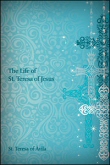
More than a simple autobiography, The Life of St. Teresa of Jesus contains St. Teresa of Ávila's thoughts on illness, prayer, the perfect Love of God, hope and faith, commentary on visions, life at the Order, meditations on the soul, and more. Benedict Zimmerman provides an in-depth introduction, as well as summaries and notes for each chapter.
St. Teresa of Ávila was a founder of the Discalced Carmelites along with St. John of the Cross. She wrote several books and was a prominent Roman Catholic saint and theologian. She spent her life in Spain and died in 1582.
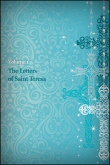
The letters of great people are the best revelation of their personality. The Letters of Saint Teresa are sometimes answers to questions asked of the her, some offer a few words of counsel or spiritual exhortation, many are doctrinal, many are strictly ecclesiastical, some are historical and biographical—all provide insight into the mind of this much loved and studied saint. Volume one covers 1561 to 1576 A. D.
St. Teresa of Ávila was a founder of the Discalced Carmelites along with St. John of the Cross. She wrote several books and was a prominent Roman Catholic saint and theologian. She spent her life in Spain and died in 1582.

The letters of great people are the best revelation of their personality. The Letters of Saint Teresa are sometimes answers to questions asked of the her, some offer a few words of counsel or spiritual exhortation, many are doctrinal, many are strictly ecclesiastical, some are historical and biographical—all provide insight into the mind of this much loved and studied saint. Volume two covers 1576 to 1577 A. D.
St. Teresa of Ávila was a founder of the Discalced Carmelites along with St. John of the Cross. She wrote several books and was a prominent Roman Catholic saint and theologian. She spent her life in Spain and died in 1582.

The letters of great people are the best revelation of their personality. The Letters of Saint Teresa are sometimes answers to questions asked of the her, some offer a few words of counsel or spiritual exhortation, many are doctrinal, many are strictly ecclesiastical, some are historical and biographical—all provide insight into the mind of this much loved and studied saint. Volume three covers 1577 to 1580 A. D.
St. Teresa of Ávila was a founder of the Discalced Carmelites along with St. John of the Cross. She wrote several books and was a prominent Roman Catholic saint and theologian. She spent her life in Spain and died in 1582.
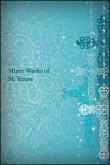
Minor Works of St. Teresa contains:
- 36 poems
- 16 "Exclamations" or meditations of the soul
- St. Teresa's seven-part Conception of the Love of God
- The Maxims of St. Teresa
- and much more!
Benedict Zimmerman provides an in-depth introduction, as well as summaries and notes for each section.
St. Teresa of Ávila was a founder of the Discalced Carmelites along with St. John of the Cross. She wrote several books and was a prominent Roman Catholic saint and theologian. She spent her life in Spain and died in 1582.
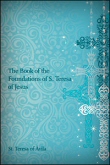
Spanning twenty years, The Book of the Foundations of S. Teresa of Jesus recounts the history of each convent and monastery St. Teresa founded. A fascinating historical narrative, St. Teresa weaves advice and lessons-learned during the trials and tribulations of each new venture.
St. Teresa of Ávila was a founder of the Discalced Carmelites along with St. John of the Cross. She wrote several books and was a prominent Roman Catholic saint and theologian. She spent her life in Spain and died in 1582.
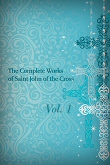
The Complete Works of Saint John of the Cross, vol. 1
- Author: St. John of the Cross
- Publisher: Longman, Green, Longman, Roberts, & Green
- Publication Date: 1864
- Pages: 455
Volume one includes the The Ascent of Mount Carmel and the The Obscure Night of the Soul. The Ascent of Mount Carmel is divided into three books: “The Nature of the Obscure Night,” “Proximate Means of Union, Faith,” and “The Purgation and Active Night of the Memory and Will.” The Obscure Night of the Soul is divided into two books: “OF the Night of Sense” and “Of the Night of the Spirit.”
St. John of the Cross was born in 1542 in Spain and was a major figure of the Reformation. He died in 1591.
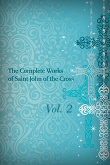
This volume includes the Spiritual Canticle between the Soul and Christ, The Living Flame of Love, plus John of the Cross' verse-by-verse commentary on the poems. Also included are Instructions and Cautions, Spiritual Maxims, seventeen letters, and twenty shorter poems. Paraphrasing the Song of Songs, Spiritual Canticle explores the image of passionate love as describing the mystical sufferings and longings of a soul enamored with God. The Living Flame of Love is a poem that was composed during or immediately after St. John of the Cross' nine month imprisonment at Toledo. Many consider The Living Flame of Love a follow up to Dark Night of the Soul.
St. John of the Cross was born in 1542 in Spain and was a major figure of the Reformation. He died in 1591.
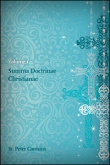
Summa Doctrinae Christianae, vol. 1
- Author: St. Peter Canisius
- Publisher: Apud C. Kollmann
- Publication Date: 1833
- Pages: 550
The Summa Doctrinae Christianae, or Sum of Christian Doctrine, is a catechism on the Catholic faith presented here in its original Latin. In a question and answer format, topics covered include the Nicene Creed, the Ten Commandments, charity, justice, confession, and more.
St. Peter Canisius was born in 1541 and became the first Dutchman to join the Jesuits order of the Society of Jesus. He oversaw the founding of the early German Jesuit colleges, and many praise his work as saving Catholicism in Germany after the Reformation. A popular teacher and preacher, his Sum of Christian Doctrine was published into fifteen languages during his lifetime.

Summa Doctrinae Christianae, vol. 2
- Author: St. Peter Canisius
- Publisher: Apud C. Kollmann
- Publication Date: 1833
- Pages: 551
The Summa Doctrinae Christianae, or Sum of Christian Doctrine, is a catechism on the Catholic faith presented here in its original Latin. In a question and answer format, topics covered include the Nicene Creed, the Ten Commandments, charity, justice, confession, and more.
St. Peter Canisius was born in 1541 and became the first Dutchman to join the Jesuits order of the Society of Jesus. He oversaw the founding of the early German Jesuit colleges, and many praise his work as saving Catholicism in Germany after the Reformation. A popular teacher and preacher, his Sum of Christian Doctrine was published into fifteen languages during his lifetime.

On the Admirability of the Virgin Theotokos from the Words of the Vision: ‘A great sign appeared’
- Author: St. Lawrence of Brindisi
- Pages: 32
This volume contains the Latin text and English translation for St. Lawrence of Brindisi's sermon On the Admirability of the Virgin Theotokos from the Words of the Vision: ‘A great sign appeared’. This sermon on Revelation 12:1 was prepared for the Saturday after Ash Wednesday.
St. Lawrence of Brindisi (1559–1619) was a Catholic priest and member of the Order of Friars Minor Capuchin. He served as imperial chaplain for the army of Rudolph II and helped fight against the Ottoman Empire. He later served as papal nuncio to Bavaria and Spain.

The Art of Dying Well
- Author: St. Robert Bellarmine
- Publisher: Richardson and Son
- Pages: 46
Though known for his more controversial writings, in his retirement St. Robert Bellarmine wrote several devotionals that both Catholics and Protestants greatly admired. The Art of Dying Well is a beautiful meditation on death, and contains many practical lessons "on the most important of all arts."
St. Robert Bellarmine (1542–1621) studied theology at the University of Padua and the University of Leuven. He was the first Jesuit to teach at the University of Leuven, and the subject of his course was Thomas Aquinas' Summa Theologica. After seven years, he moved and taught theology at the new Rome College. In 1592, he was made rector of the Roman College, then examiner of bishops in 1598, and then cardinal in 1599. In 1602 he was made archbishop of Capua, and later served as archbishop of Montepulciano until his retirement.
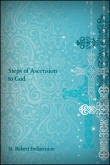
In fifteen steps, Bellarmine outlines practical ways in which believers can get closer to God. Using Scripture and the words of the Church Fathers, Bellarmine provides the blueprints for an internal "ladder by which he may ascend as high as to God Almighty."
St. Robert Bellarmine (1542–1621) studied theology at the University of Padua and the University of Leuven. He was the first Jesuit to teach at the University of Leuven, and the subject of his course was Thomas Aquinas' Summa Theologica. After seven years, he moved and taught theology at the new Rome College. In 1592, he was made rector of the Roman College, then examiner of bishops in 1598, and then cardinal in 1599. In 1602 he was made archbishop of Capua, and later served as archbishop of Montepulciano until his retirement.
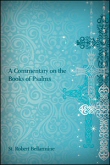
A Commentary on the Books of Psalms
- Author: St. Robert Bellarmine
- Publisher: James Duffy
- Publication Date: 1866
- Pages: 382
St. Robert Bellarmine gives verse-by-verse commentary on the Psalms as they are in the Vulgate and rendered in the Douay-Rheims Bible. Nearly 400 pages of wisdom, each psalm is extensively commented on with Bellarmine's usual eloquence.
St. Robert Bellarmine (1542–1621) studied theology at the University of Padua and the University of Leuven. He was the first Jesuit to teach at the University of Leuven, and the subject of his course was Thomas Aquinas' Summa Theologica. After seven years, he moved and taught theology at the new Rome College. In 1592, he was made rector of the Roman College, then examiner of bishops in 1598, and then cardinal in 1599. In 1602 he was made archbishop of Capua, and later served as archbishop of Montepulciano until his retirement.
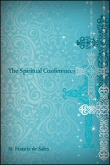
The Spiritual Conferences are a collection of instructions addressed to the Sisters of the Order of the Visitation of Holy Mary. For over two years he delivered these twenty-one discourses in the orchards outside of the order. Topics include confidence, cordiality, humility, generosity, and more.
St. Francis de Sales was an accomplished preacher and devoted much of his life working to convert Protestants back to Catholicism. Additionally, he is known for his writings about spiritual direction and spiritual formation.
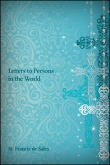
A prolific letter writer and teacher, St. Francis de Sales wrote hundreds of letters to those seeking spiritual counsel. Letters to Persons in the World is divided into seven sections:
- Letters to Young Ladies
- Letters to Married Women
- Letters to Widows
- Letters to Men of the World
- Various Letters
- Various Letters Continued
- Letters of the Saint about Himself
St. Francis de Sales was an accomplished preacher and devoted much of his life working to convert Protestants back to Catholicism. Additionally, he is known for his writings about spiritual direction and spiritual formation.

A prolific letter writer and teacher, St. Francis de Sales wrote hundreds of letters to those seeking spiritual counsel who worked within religious institutions. Letters to Persons in Religion is divided into six sections:
- Letters Previous to the Founding of the Visitation
- Earlier Letters to Sisters of the Visitation
- Later Letters to Sisters of the Visitation
- Further Letters to Religious Outside the Visitation
- General Instructions to Sisters of the Visitation
- Letters for Various Festivals
St. Francis de Sales was an accomplished preacher and devoted much of his life working to convert Protestants back to Catholicism. Additionally, he is known for his writings about spiritual direction and spiritual formation.

Found in a box by St. Jane Frances de Chantal fifteen years after his death, The Mystical Explanation of the Canticle of Canticles contains St. Francis de Sales' explanation of the Canticle of Canticles set out in the form of a meditation. The Depositions of St. Jane Frances de Chantal contains the list of deposition questions provided to St. Jane Frances de Chantal about St. Francis de Sales during the investigation for his canonization, and the answers she provided.
St. Francis de Sales was an accomplished preacher and devoted much of his life working to convert Protestants back to Catholicism. Additionally, he is known for his writings about spiritual direction and spiritual formation.

St. Francis de Sales' treatise on the love of God is divided into twelve areas of study:
- Introduction to the Whole Treatise
- The Origin of Divine Love
- The Progress and Perfection of Love
- The Decay and Ruin of Charity
- The Two Chief Acts of Divine Love, Which Are Complacency and Benevolence
- The Practice of Holy Love in Prayer and Meditation
- The Union of the Soul with Its God as Perfected By Prayer
- The Love of Conformity, By Which We Unite Our Will to That of God
- The Love of Submission, By Which Our Will is United to God's Good Pleasure
- The Command to Love God Above All Things
- The Supreme Authority of Love Over All the Soul's Virtues, Actions, and Perfections
- Counsels Concerning the Soul's Advance in Divine Love
St. Francis de Sales was an accomplished preacher and devoted much of his life working to convert Protestants back to Catholicism. Additionally, he is known for his writings about spiritual direction and spiritual formation.
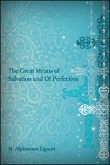
St. Alphonsus Liguori's classic work on salvation first focuses on the necessity and power of prayer, and then the conditions necessary to make it efficacious with God. Then Liguori explores the nature of grace, and shows that the grace of prayer is given to all.
St. Alphonsus Liguori (1696–1787) abandoned a successful career as a lawyer to join the priesthood. He was ordained in 1726 at the age of thirty. St. Alphonsus Liguori dedicated his life to the poor, founding the Evening Chapels—centers of prayer, social activity, and education—for the poor and homeless youth of Naples. Later in life he founded the Congregation of the Most Holy Redeemer, a congregation dedicated to preaching in the slums of cities. In 1762, Alphonsus was consecrated Bishop of Sant'Agata dei Goti.
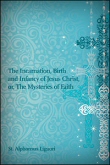
This volume contains over seventy discourses and meditations on celebrating the Nativity of Jesus at Christmas. Also included are hymns, prayers, maxims, and other miscellaneous writings of St. Alphonsus Liguori.
St. Alphonsus Liguori (1696–1787) abandoned a successful career as a lawyer to join the priesthood. He was ordained in 1726 at the age of thirty. St. Alphonsus Liguori dedicated his life to the poor, founding the Evening Chapels—centers of prayer, social activity, and education—for the poor and homeless youth of Naples. Later in life he founded the Congregation of the Most Holy Redeemer, a congregation dedicated to preaching in the slums of cities. In 1762, Alphonsus was consecrated Bishop of Sant'Agata dei Goti.

This volume is entirely devoted to the Passion of Jesus Christ. It consists of five parts:
- Reflections on the Passion
- The Simple Exposition of the Passion
- Considerations
- Meditations
- Other Exercises of Piety
St. Alphonsus Liguori (1696–1787) abandoned a successful career as a lawyer to join the priesthood. He was ordained in 1726 at the age of thirty. St. Alphonsus Liguori dedicated his life to the poor, founding the Evening Chapels—centers of prayer, social activity, and education—for the poor and homeless youth of Naples. Later in life he founded the Congregation of the Most Holy Redeemer, a congregation dedicated to preaching in the slums of cities. In 1762, Alphonsus was consecrated Bishop of Sant'Agata dei Goti.

Centered on the Holy Eucharist, this collection of St. Alphonsus Liguori's writings include the following six works:
- The Sacrifice of Jesus Christ
- Visits to the Blessed Sacrament and to the Blessed Virgin
- Meditations for the Octave of Corpus Christi
- Novena to the Sacred Heart
- The Practice of the Love of Jesus Christ
- Meditations
St. Alphonsus Liguori (1696–1787) abandoned a successful career as a lawyer to join the priesthood. He was ordained in 1726 at the age of thirty. St. Alphonsus Liguori dedicated his life to the poor, founding the Evening Chapels—centers of prayer, social activity, and education—for the poor and homeless youth of Naples. Later in life he founded the Congregation of the Most Holy Redeemer, a congregation dedicated to preaching in the slums of cities. In 1762, Alphonsus was consecrated Bishop of Sant'Agata dei Goti.
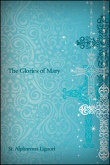
In The Glories of Mary, St. Alphonsus defends Mariology and includes numerous citations from the Church Fathers and the Doctors of the Church in favor of devotion to the Virgin Mary. A classic in the field of Roman Catholic Mariology, this volume also includes "Of the Virtues of the Most Holy Mary," as well as Marian prayers, meditations, and devotions.
St. Alphonsus Liguori (1696–1787) abandoned a successful career as a lawyer to join the priesthood. He was ordained in 1726 at the age of thirty. St. Alphonsus Liguori dedicated his life to the poor, founding the Evening Chapels—centers of prayer, social activity, and education—for the poor and homeless youth of Naples. Later in life he founded the Congregation of the Most Holy Redeemer, a congregation dedicated to preaching in the slums of cities. In 1762, Alphonsus was consecrated Bishop of Sant'Agata dei Goti.

Sermons for All the Sundays in the Year includes fifty-three sermons by St. Alphonsus Liguori. Topics include judgment, salvation, sin, hell, heaven, bad habits, anger, love, communion, charity, prayer, and more. Also included is St. Alphonsus' essay "Instructions to Preachers."
St. Alphonsus Liguori (1696–1787) abandoned a successful career as a lawyer to join the priesthood. He was ordained in 1726 at the age of thirty. St. Alphonsus Liguori dedicated his life to the poor, founding the Evening Chapels—centers of prayer, social activity, and education—for the poor and homeless youth of Naples. Later in life he founded the Congregation of the Most Holy Redeemer, a congregation dedicated to preaching in the slums of cities. In 1762, Alphonsus was consecrated Bishop of Sant'Agata dei Goti.

The Divine Office contains St. Alphonsus' explanation of the Psalms and Canticles. He takes each verse of the psalms separately, and gives of it extended paraphrase, interspersed by diverse explanations. The Latin text and English translation is given for each psalm, and St. Alphonsus provides a seven part introduction on the nature, composition, and authorship of the psalms.
St. Alphonsus Liguori (1696–1787) abandoned a successful career as a lawyer to join the priesthood. He was ordained in 1726 at the age of thirty. St. Alphonsus Liguori dedicated his life to the poor, founding the Evening Chapels—centers of prayer, social activity, and education—for the poor and homeless youth of Naples. Later in life he founded the Congregation of the Most Holy Redeemer, a congregation dedicated to preaching in the slums of cities. In 1762, Alphonsus was consecrated Bishop of Sant'Agata dei Goti.
Reviews
6 ratings

Unix
1/7/2015

G
1/2/2014

Deacon Tim Johnson
11/12/2013

Matthew Langlois
11/2/2013
Bobby Terhune
10/13/2013
Michael Maria Waldstein
8/25/2013